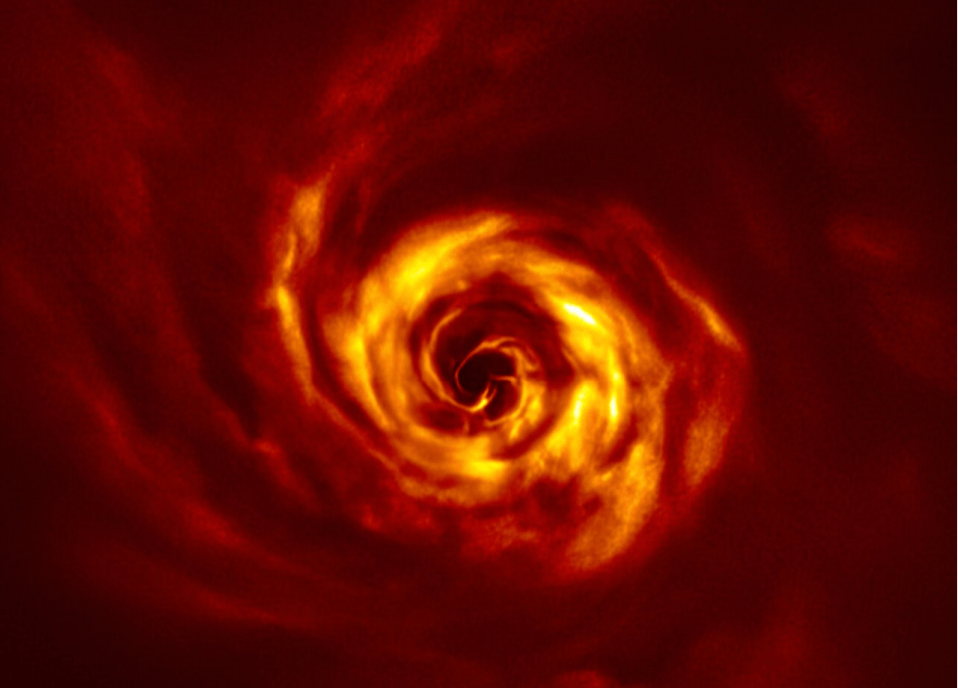
Now they’ve taken another look, and found a very young planet forming there.
They’re so young they’re not main sequence stars yet, and they’re still surrounded by their circumstellar disk of gas and dust.
And out of that gas and dust, young planets are forming.
The disk around AB Aurigae, which is over 500 light years away, has spiral arms that meet in a knot.
Scientists believe that the knot is the precise point where a young planet is forming.
A new study used the SPHERE (Spectro-Polarimetric High-contrast Exoplanet REsearch) instrument on the Very Large Telescope (VLT) to take a closer look at AB Aurigae and the planets developing inside its disk.
The circumstellar disk around the star is difficult to see into, and even our best technology is barely up to the task.
That twisted knot where the spiral arms of AB Aurigae’s circumstellar disk meet is as close as we’ve come to capturing that moment.
That’s because the planet’s mass has an effect on the less dense gas and dust in the disk.
“The twist of the spiral is perfectly reproduced with a planet-driven density wave model when projection effects are accounted for.”.
According to Emmanuel Di Folco of the Astrophysics Laboratory of Bordeaux (LAB), France, who took part in this study, the young planets create “disturbances in the disc in the form of a wave, somewhat like the wake of a boat on a lake.” And as the young planet rotates around the central star, those disturbances become spiral arms.
Among the many structures that are yet to be understood, we identified not only the inner spiral arms, but we also resolved a feature in the form of a twist in the eastern spiral at a separation of about 30 au.”.
“The twist of the spiral is perfectly reproduced with a planet-driven density wave model when projection effects are accounted for,” the authors write.
Initial observations of AB Aurigae made with ALMA, but without SPHERE, showed the pair of spiral arms.
They allow gas and dust from the disc to accrete onto the forming planet and make it grow.”.
There’s ample theory to support the birth of planets at the twist point.
“In the early stage of planet formation, hydrodynamical simulations indicate that the accretion process generates at the planet location an inner and outer spiral pattern due to Lindblad resonances induced by disk-planet interactions,” the team writes.
In their conclusion, the authors write “…the SPHERE observations of AB Aur in scattered light combined to the ALMA data in the thermal regime provide strong evidence that we are actually witnessing ongoing planet formation revealed by its associated spiral arms.”.
